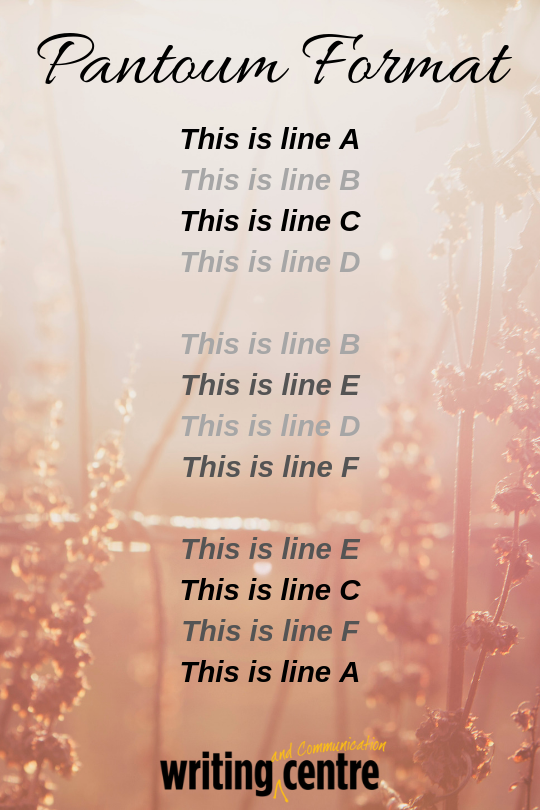April is national poetry month! It’s that time of year when we celebrate a genre of writing that most people either love or hate. For those of you who do not know me personally, I fall firmly in the “love” category and spend a decent amount of my free time writing in this genre.
My usual form for writing poetry is free verse, where there is no specific line length, rhyme scheme, or format. In free verse everything is up to the writer, and I love that ability to write whatever comes through my head. It is my way of exploring the world and how I relate to it. For this post however, I decided to do something a little different. The following poem is a modern pantoum.

My favourite thing about pantoums is their circular rhythm. The ideas keep coming back and then interacting with new ideas in different ways. It creates a very clear path for how the poem moves and comes full circle as lines “a” and “c” become lines “d” and “b” respectively in the final stanza. In other words, the poem ends with the same line it started with. It comes full circle. The poem could nearly go on forever by repeating itself. However, there is a difference between the two times we encounter these lines. The final stanza creates a completely different context than the beginning and so the meaning of the line has changed. The poem has gone on a journey and taken the reader along with it.
I hope you enjoy my latest poetic creation and take some time to explore this fantastically diverse genre as we head into poetry month 2019.
Timeless
